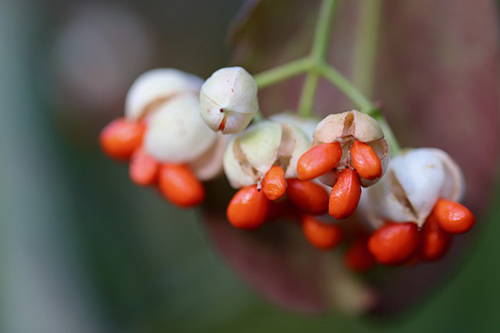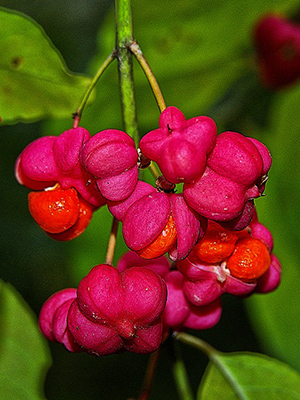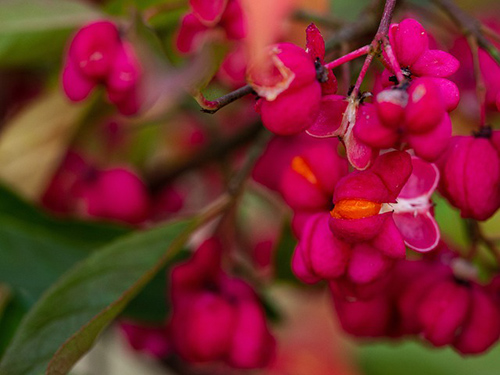Contents
The wood of the spindle tree has an excellent ability to make various tools, among these the wool spindles formerly made. Hence, many of its common names come from that word.

Spindle Tree Scientific Facts
- Other names: Prick wood, European spindle tree.
- French: Bonnet de pretre.
- Spanish: Evonimo.
- Environment: Common in moist soils and clear forests all over Europe. It has been naturalized to woody areas of North America.
- Description: Shrub of the Chelastraceae family, growing two to four meters high, with fleshy, exuberant, purple, or pink fruits divided into four segments.
- Parts of the plant used medicinally: The fruit.
Healing Properties and Warnings

The whole plant, especially its fruit, contains a glycoside called evonymine, an essential active component of the plant. It also contains tannin, organic acids, coloring substances, and vitamin C. It has cardiotonic properties similar to those of the foxglove and cholagogue properties.

We do not recommend the internal use of the spindle tree because of its toxicity. When utilized externally, the fruit can be used as an insect killer against several human parasites, such as lice and scabies. Because of chemical products, this plant is seldom used, even though this fact does not mean the spindle tree is useless.
WARNING! Internally applied, it is toxic in doses of over 10g of fruit, producing violent diarrhea and heart disorders.
How to use Spindle Tree
- Washings with a decoction of 30g of fruit per liter of water are applied to the skin area affected by parasites, even on the scalp.
- Frictions: The fruit can be rubbed directly on the skin.
DISCLAIMER: All content on this website is presented solely for educational and informational objectives. It would be best to not rely on the information provided as a replacement for advice, diagnosis, or treatment from a qualified medical expert. If you are pregnant, nursing, or have any preexisting medical concerns, you should talk to your doctor before using any herbal or natural medicines.
REFERENCES
- George D. Pamplona-Roger, M.D. “Encyclopedia of Medicinal Plants.” George D. Pamplona-Roger, M.D. Encyclopedia of Medicinal Plants. Ed. Francesc X. Gelabert. vols. 2 San Fernando de Henares: Editorial Safeliz, 2000. 707. Print.
